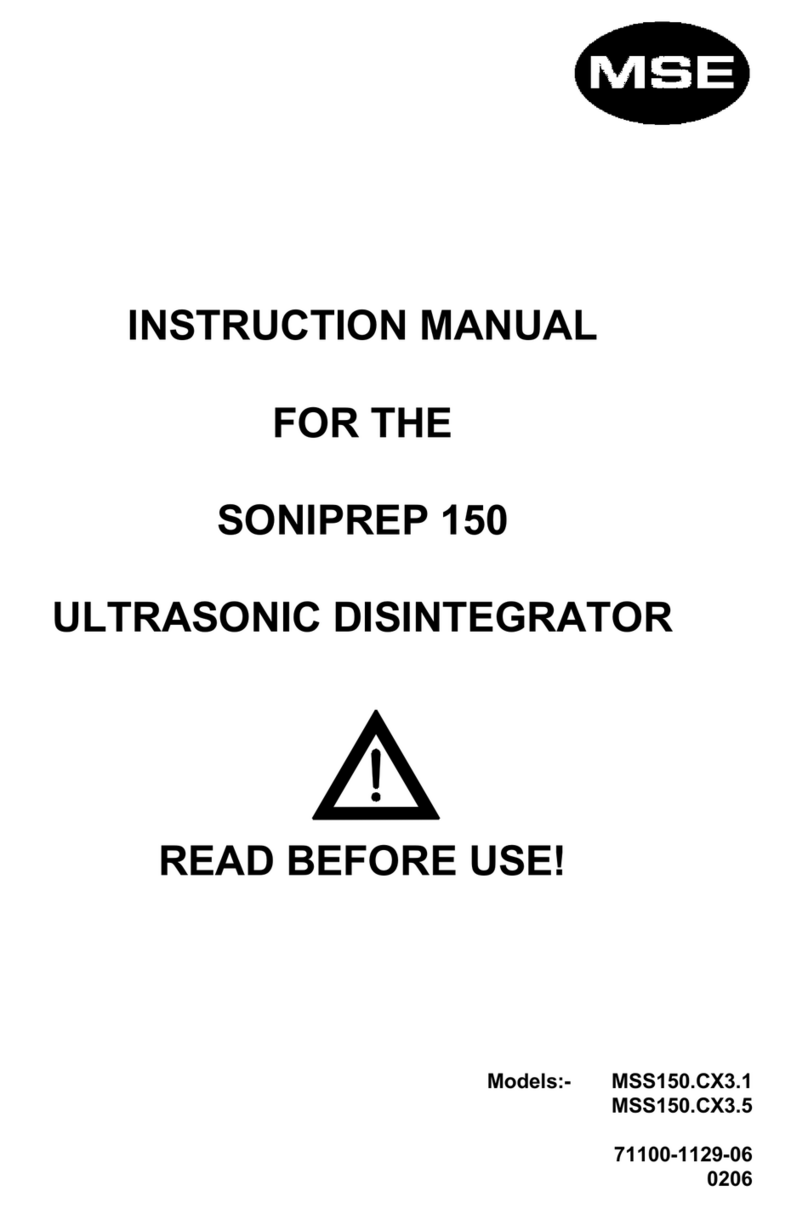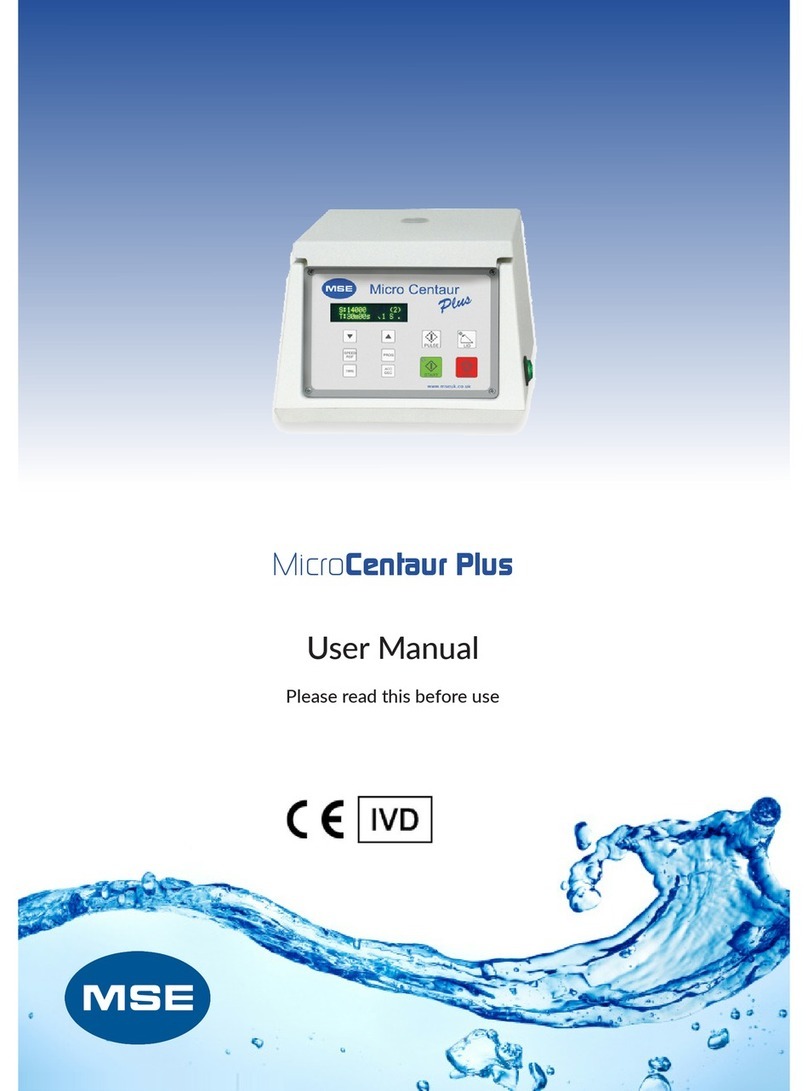3
MSE CENTRIFUGES Ltd
Health and Safety at Work
MSE CENTRIFUGES Ltd is required under the Health and Safety at Work Act, 1974 and other UK
legislation as designers, manufacturers, suppliers and importers of articles for use at work to ensure
that, as far as is reasonably practicable, articles which we design, produce, supply or import are safe
and without risk to health. We are required to provide information on the safety and handling
precautions to be observed when installing, operating, maintaining and servicing our products. Such
advice is contained in this manual. We are also obliged to update this information should
circumstances change and to operate a system to this end.
We should also like to point out, however that you as users have an important responsibility in the
provision and maintenance of safe working practices and conditions.
Accordingly, we draw the following matters to your attention:
1. This apparatus should only be used as intended and within its design parameters and by
suitably qualified and trained personnel who have read and understood the relevant sections
of this manual.
2. This manual should be readily available to such personnel at all times.
3. In addition to that which is written in the manual, normal common-sense safety precautions
must be taken at all times to avoid the possibility of accidents. Particular care is required
when working with apparatus at high temperature or pressure.
4. This centrifuge has been supplied with a rotor already fitted and rotor nut tightened to secure
it. This rotor nut must be checked, periodically, by the user to ensure that it remains
sufficiently tight for safe operation. Damage caused to the centrifuge by running it with an
insufficiently tight rotor nut is not covered by the manufacturer’s warranty.
5. Installation, maintenance, repairs and servicing should only be carried out by an MSE
CENTRIFUGES Ltd approved engineer, and connection to electrical supplies should only be
carried out by suitably trained personnel.
TECHNICAL SUPPORT, WARRANTY SERVICE AND MAINTENANCE
UK customers; if you are in any doubt whatsoever regarding the correct use of this apparatus, or if
you require any technical data or assistance, please contact the MSE CENTRIFUGES Ltd Technical
Support Department at:
MSE CENTRIFUGES Ltd
11 Browning Road,
Heathfield,
East Sussex.
TN21 8DB
United Kingdom
Tel: +44 (0)1435 517 000
www.msecentrifuges.com
OVERSEAS CUSTOMERS: Should contact their local MSE CENTRIFUGES Ltd distributor, details
can be found on our website.
ELECTRICITY SUPPLIES: Voltage and frequency MSE CENTRIFUGES Ltd electrical apparatus is
offered and labelled for one, or for a choice of two voltage ranges and, where necessary, different
frequencies of mains supply. MSE CENTRIFUGES Ltd does not accept any responsibility for the
operation of any such apparatus should it be connected to electricity supplies which are normally
outside, or vary outside, the stated voltage and frequency values for which it is designed, nor for any
consequential loss, damage or injury, howsoever caused.































